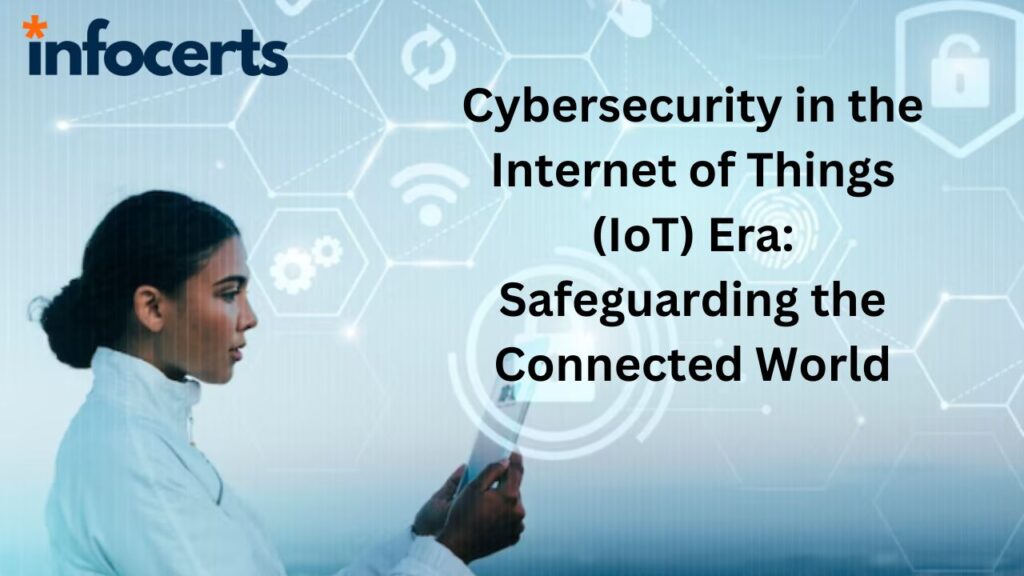Introduction:
In the fast-evolving digital landscape, the Internet of Things (IoT) has emerged as a transformative force, connecting billions of devices, from smart home appliances to industrial machinery. While the Internet of Things (IoT) offers unprecedented convenience and efficiency, it also introduces significant Cybersecurity Challenges. As our world becomes increasingly interconnected, safeguarding the IoT ecosystem has become a paramount concern.
- The Expanding Attack Surface:
The IoT era has expanded the attack surface for cybercriminals, providing them with numerous entry points to infiltrate networks and devices. Vulnerabilities in Internet of Things (IoT) devices, often exacerbated by lax security practices during development, can lead to serious consequences such as Data Breaches, privacy violations, and even physical harm in critical industries.
- Data Privacy and Security:
As IoT devices constantly collect and transmit vast amounts of sensitive data, ensuring robust Data Privacy and security is crucial. Without proper protection measures, unauthorized access to personal information can occur, leading to identity theft or exposure of private user data.
- DDoS Attacks and Botnets:
IoT devices’ sheer volume and often insufficient security measures make them ideal targets for Distributed Denial of Service (DDoS) attacks and botnets. Cybercriminals can compromise a large number of vulnerable devices and use them to launch coordinated attacks, disrupting essential services and networks.
- Lack of Standardization:
The lack of universal security standards in the Internet of Things (IoT) industry hampers consistent security practices across various devices and platforms. This fragmentation leaves many devices vulnerable, as manufacturers may prioritize functionality over security during development.
- Importance of User Awareness:
While manufacturers need to prioritize security in IoT device design, user awareness and responsibility are equally vital. Users must be educated about potential risks and encouraged to implement best security practices, such as using strong passwords, updating firmware regularly, and being cautious with granting device permissions.
- Secure Development and Regular Updates:
IoT device manufacturers must prioritize secure development practices, performing rigorous security testing and employing encryption protocols to safeguard data. Regular firmware updates are essential to patch vulnerabilities and address emerging threats.
| Topic | Description |
| The Expanding Attack Surface | IoT devices provide numerous entry points for cybercriminals to infiltrate networks. |
| Data Privacy and Security | Robust protection is essential to prevent unauthorized access to sensitive user data. |
| DDoS Attacks and Botnets | Vulnerable IoT devices are prime targets for coordinated attacks, disrupting services. |
| Lack of Standardization | Inconsistent security practices due to the absence of universal IoT security standards. |
| Importance of User Awareness | Educating users about risks and best security practices is crucial for safer IoT usage. |
| Secure Development and Updates | Manufacturers must prioritize secure development and regular firmware updates. |
Conclusion:
As we embrace the boundless possibilities of the IoT, we must remain vigilant about the cybersecurity challenges it poses. Safeguarding the connected world requires a collaborative effort between manufacturers, developers, policymakers, and end-users. By establishing robust security standards, educating users, and fostering a security-first mindset, we can ensure that the IoT era remains a powerful force for positive change without compromising our digital safety. Embracing the full potential of IoT while prioritizing cybersecurity is the key to building a safer and more resilient connected world.
FaQs:
- What is the Internet of Things (IoT) and how does it impact cybersecurity?
- Why is the expanding attack surface a major concern in the IoT era?
- How does data privacy and security play a crucial role in safeguarding the IoT ecosystem?
- What are the potential risks associated with DDoS attacks and botnets targeting IoT devices?
- How does the lack of standardization in the IoT industry affect device security?
——————————————————————————————————————–
Infocerts, 5B 306 Riverside Greens, Panvel, Raigad 410206 Maharashtra, India
Contact us – https://www.infocerts.com

